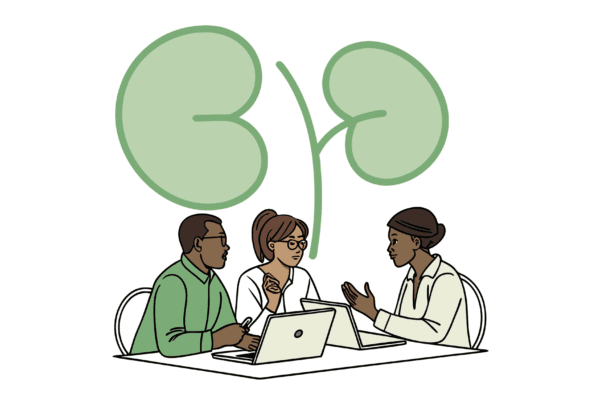Selling your San Francisco orthopedic and post-surgical rehab practice is a significant decision. The Bay Area market presents unique opportunities, but a successful exit depends on strategic preparation and a deep understanding of today’s buyers. This guide provides a clear roadmap, from valuation to transition, helping you navigate the process confidently and maximize your practice’s legacy.
Market Overview
The San Francisco market for orthopedic and post-surgical rehab is dynamic and competitive. High operational costs and a dense population create a high barrier to entry for new practices. This dynamic makes established practices like yours particularly attractive to buyers seeking a foothold in a lucrative but challenging environment.
A long history in a specific neighborhood builds significant goodwill, something a startup cannot replicate. Buyers, from private equity groups to expanding regional players, recognize this value. They are actively looking for well-run practices with strong community ties and a stable patient base. The key is understanding how to position your practice to capture the attention of these sophisticated buyers.
Key Considerations
Before you even think about valuation, a successful sale begins with an honest internal review. It is more than just numbers. It is about being strategically and emotionally prepared for the transition.
Your Personal Readiness
Are you ready to let go of control? What does life after the sale look like? Answering these questions clarifies your goals and helps define the right deal structure for you.
Your Practice’s Health
Buyers will scrutinize your practice’s operational health. A strong online reputation on platforms like Yelp and Google, combined with a team of well-trained, long-term employees, signals a stable and well-managed business.
Your Real Estate Situation
In San Francisco, your lease is a critical asset. Is it long-term and transferable? If you own the building, are you planning to sell it or become a landlord? Resolving this early on prevents major roadblocks during negotiations.
Market Activity
Consolidation continues to shape the healthcare landscape, and the Bay Area’s orthopedic and rehab sector is no exception. We are seeing a steady flow of transactions driven by both strategic buyers (other large practices) and private equity platforms looking to expand their footprint. These buyers are not just looking for revenue. They are acquiring established brands, skilled teams, and loyal patient bases.
While a full cash buyout is ideal, most deals today involve structured payments. Installment sales are common, and sellers need protections like personal guarantees and UCC filings. More complex structures like earn-outs or equity rollovers are also on the table. These offer potential upside but require careful negotiation. Understanding who is buying and how they are structuring deals is key to timing your sale effectively.
Sale Process
A well-managed sale process minimizes surprises and maximizes value. It typically follows a clear path from initial preparation to the final handshake. Being organized is your best defense against a deal falling apart during the critical due diligence phase.
| Stage | What It Involves | Where Sellers Need Guidance |
|---|---|---|
| 1. Preparation | Gathering 3-5 years of financials, organizing records, and creating an Executive Summary. | Identifying what buyers truly value and framing the narrative. |
| 2. Buyer Outreach | Confidentially marketing the practice to a curated list of qualified buyers under an NDA. | Accessing a network beyond local competitors. |
| 3. Due Diligence | The buyer and their team review your financials, contracts, and operations in detail. | Managing the flow of information and resolving issues. |
| 4. Negotiation & Closing | Finalizing the purchase price, deal structure (Asset vs. Entity Sale), and transition terms in a formal Sale Contract. | Structuring a tax-efficient deal and protecting your interests. |
Valuation
Many owners believe their practice’s value is simply a multiple of revenue. The reality is more nuanced. The true value is what a sophisticated buyer is willing to pay. They focus on one key metric: Adjusted EBITDA. This is not the profit on your tax return. It is your practice’s true cash flow, normalized for things like your personal salary, one-time expenses, or other owner-specific perks.
This Adjusted EBITDA is then multiplied by a factor based on market conditions, practice size, provider dependency, and growth potential. Your practice’s goodwill, the value of your brand, reputation, and patient loyalty, is a massive part of this equation. Getting this number right is the foundation of a successful negotiation. It requires a professional analysis, not a simple rule of thumb.
Post-Sale Considerations
Closing the deal is not the end of the journey. A smooth transition is vital for preserving the goodwill you have built and ensuring the continued success of the practice. Careful planning in these areas protects your legacy and the people who helped you build it.
Key areas to plan for include:
- Patient and Referral Communication. A coordinated plan to announce the change is crucial. A ‘Hello/Goodbye’ event can help ensure a high patient retention rate, which is often tied to the final sale price.
- Staff Transition. Your team is one of your greatest assets. Clear communication about their future with the new owner is important for morale and continuity of care.
- Your Ongoing Role. Your sales contract will define your involvement post-sale, if any. This could be as an employee, a consultant, or bound by a non-compete agreement. The terms must be clearly defined and compensated.
Frequently Asked Questions
What makes the San Francisco market unique for selling an orthopedic & post-surgical rehab practice?
The San Francisco market is dynamic and competitive with high operational costs and a dense population, creating a high barrier to entry. Established practices in this area are attractive to buyers because they come with significant goodwill, strong community ties, and a stable patient base.
What should I consider about my practice before putting it on the market?
Before selling, you should conduct an honest internal review beyond just financials. Consider your personal readiness for transition, the operational health of your practice (including your online reputation and the stability of your team), and your real estate situation, such as lease terms or property ownership.
How is the value of an orthopedic and post-surgical rehab practice determined?
The value is primarily based on Adjusted EBITDA, which represents the true cash flow of the practice normalized for owner-specific expenses. This figure is multiplied by a market factor considering practice size, market conditions, provider dependency, and growth potential. Goodwill and patient loyalty also significantly influence valuation.
What is the typical sale process for these practices?
The process involves four main stages: Preparation (organizing financials and records), Buyer Outreach (marketing to qualified buyers confidentially), Due Diligence (buyer reviewing financials and operations), and Negotiation & Closing (finalizing the purchase price, deal structure, and transition terms).
What steps should be taken post-sale to ensure a smooth transition?
Post-sale planning should focus on patient and referral communication, such as organizing a ‘Hello/Goodbye’ event to keep patients; clear communication with your staff about their future roles; and defining your ongoing role in the practice, which could include employment, consulting, or abiding by a non-compete agreement.



